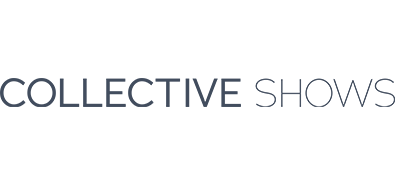 Nick Adcock, global president of DC Shoes, left, with Mark Miller,
Nick Adcock, global president of DC Shoes, left, with Mark Miller, senior vice president and general manager of North America.
I learned many interesting things about DC Shoes when I met with Global President Nick Adcock and Senior Vice President, North American General Manager Mark Miller at ASR.
One theme emerged crystal clear: DC has big ambitions, and has a plan to get there.
“We believe DC can compete with major sports brands of the world,” Nick said. “We are always pushing ourselves. We are looking beyond our industry for inspiration.”
For the recent X Games in Los Angeles, the company envisioned what a large sports company would do if a major sporting event was held in its backyard.
DC rented the Standard Hotel in Los Angeles for several days, flew in 35 retailers, company sales reps and others, hosted parties every night and took its guests to the X Games.
One reason DC can afford to put on such an event is its phenomenal growth.
DC’s revenue grew 56 percent last year, Mark said. In the fiscal year ended Oct. 31, 2007, DC accounted for 15 percent, or approximately $364 million, of Quiksilver’s $2.43 billion in revenue, according to Quiksilver’s SEC filings.
Previously, DC set a plan to reach $500 million in sales in five years. The company will accomplish that in four.
Nick said the company is evolving from a U.S.-centric skate brand when Quiksilver bought it in 2004, into a global premium sports brand.
Here are more details:
Economy: It will be hard to match DC’s 56 percent growth rate in 2008, but the company revenues will still grow double digits, Mark said.
“We are working on the basis that when things get better, we want to maintain market share and continue building,” Nick said. “We added 40 people this year and will add 40 people next year.”
Mark and Nick don’t let their staff dwell on recession talk.
“You don’t have to be down because the world is down,” Mark said. Even in this market, there are always exceptions.”
And DC is the exception. Parent company Quiksilver has repeatedly said DC is currently the key growth driver for the company.
In the third quarter ended July 31, for example, DC recorded growth in the Americas while sales declined for Roxy and Quiksilver brands, according to Quiksilver’s filings. DC apparel showed particularly strong growth.
Apparel: DC apparel has evolved from T-shirts, hats and fleece five years ago to a full cut-and-sew line that is tailored to different distribution channels, including the core market, mall retailers such as Zumiez and PacSun, and department stores.
It has also expanded the offering by age and gender, and now have boys 2 to 7, boys 8 to 20, young men’s, women’s and snow.
The DC apparel has been in department stores for about a year, and is experiencing double digit growth, Mark said. He said the company moved into the channel slowly and conservatively because it did not have experience with department stores.
The Quiksilver advantage: Mark said the Quiksilver team “held our hands” as DC moved into the department store channel and made key introductions. The relationship with Quiksilver has “accelerated our growth. Doors have swung open for us,” he said.
Nick spends one day a week at Quiksilver headquarters, soaking up the knowledge of the senior management team, which has deep experience growing an action sports brand. “Every screw up, they’ve made or avoided,” Nick said.
When Quiksilver bought DC in 2004, sales were approximately $100 million.
Nick said there’s no way DC could have grown so rapidly without Quiksilver’s backing.
“We wouldn’t have had a hope in hell of growing from a $100 million, private company to where we are today,” Nick said.
The global opportunity: Mark, previously senior vice president of sales, was recently promoted to general manager of North America.
As of Sept. 1, the company hired Gary Parsons as the general manager for the Asia Pacific region, a new position. He joins DC from K-Swiss where he was the company’s international president.
The general manager of Europe, Matthieu Bazil, has been in that position for 2.5 years.
With key global general managers in place, the goal is to free Nick to focus on larger, global issues instead of worrying about the daily nuts and bolts of the business.
Now, Nick said he is focusing on the business three to five years out, the vice presidents are looking 18 months to three years out, and the managers focus on now to 18 months out.
Nick said DC growth in Europe is very strong for the entire brand. The company sees a big opportunity in snow in Europe now that DC has both hard and soft goods to offer.
Southeast Asia and China will get an even bigger push in the near future as the new general manager for the region gets going.
South America and Eastern Europe are big targets for growth. “Russia is going crazy,” Nick said.
Structurally, DC operates its global design, marketing and corporate headquarters from Vista, then has regional marketing and sales offices in key global territories.
“Our heads are down, and we are working on hard on what we can achieve,” Mark said.





